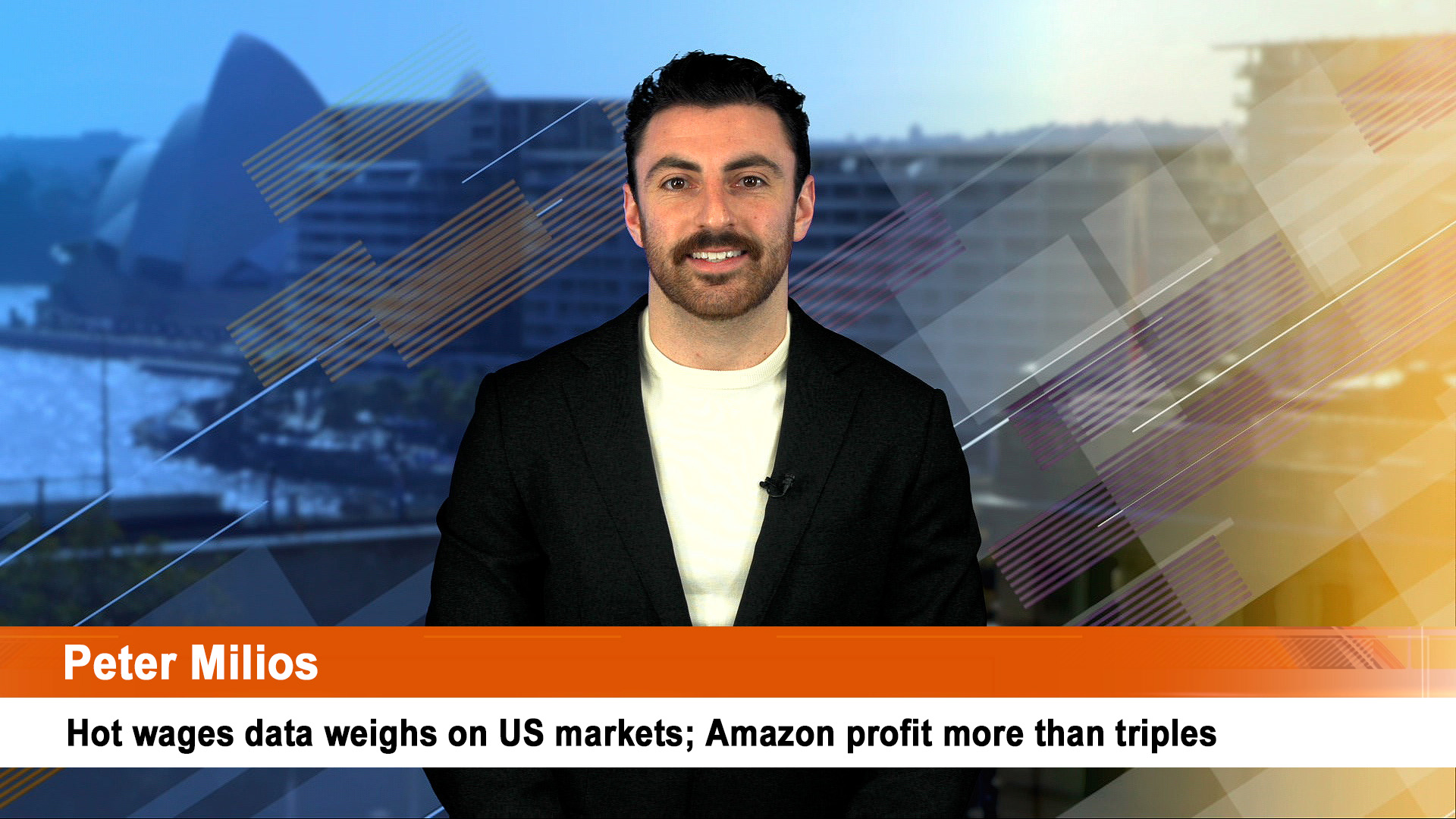After Friday’s better than expected first quarter GDP figure of annual growth of 3.2%, it’s natural that global attention this week will focus on the conjunction of two major US events – the statement from the latest two day meeting of the Federal Reserve and media conference from chair, Jay Powell, plus the April jobs report two days later.
Globally it is the start of the month surveys of the health of manufacturing and services and the big question is whether the sluggish pace of activity seen for the past nine months in China and the eurozone is fading, or spreading.
The Fed statement and Powell presser will be early Thursday morning, our time, while the jobs report will be out late Friday night our time (10.30pm).
Last Friday’s GDP report was better than expected, but depended on positive contributions from a weak trade account (imports down sharply thanks to the Trump trade war) and a surge in the value of unsold business stocks (which will depress growth in coming months as they are wound down and production falls to adjust).
Consumer demand and business investment slowed noticeably, while home construction fell for the 5th quarter in a row. Final demand grew 1.3% in the quarter, half the 2.6% rate in the final three months of 2018 and the lowest quarterly growth for six years.
In some respects the 3.2% growth figure (it could be changed once final trade and consumer spending data become available, starting later today with the Fed’s preferred measure of prices and spending due for release) was a misleading figure – economists say underlying growth as shown by the 1.3% rise in final demand, is much weaker than the headline figure.
For that reason, the Fed will remain on hold this week and not move until it sees something more convincing. The April jobs data looks like being solid – 180,000 new jobs are forecast with the jobless rate at 3.8% and wage growth above 3%.
Tonight sees those Fed favoured figures for inflation and consumer spending released in the Personal Consumption Expenditure report.
Friday’s GDP report showed preliminary figures for core inflation around 1.7% (down from 1.9%) which is well under the 2% Fed target and tonight’s release is forecast to be around the same figure.
This week also sees the release of the start of month surveys of activity in manufacturing and services (the latter accounts for more than 65% of the US economy). Economists are looking to see if service sector activity starts falling back to the sliding pace of growth in manufacturing.
US car sales reports will also be out from Wednesday and whether the sluggish state of the industry is continuing (the GDP report singled out cars as one sector experiencing slowing sales in the first quarter).
The US March quarter earnings season continues with 164 S&P 500 companies down to report – led by Alphabet (Google) overnight Monday and Apple (early Wednesday, our time).
In Australia, it’s a quiet week for data – relative to the upsurge in news and comment generated last week from the weak inflation data for the first quarter.
But we still have the March credit data from the Reserve Bank tomorrow, house prices for April on Tuesday and building approvals for March on Thursday (with a fall after the unexpected 19% surge in February on a jump in approvals for apartments).
So far as earnings are concerned the bank season starts with the ANZ releasing its interim figures tomorrow followed by the NAB on Thursday and Macquarie on Friday (a full year report). See separate report.
Getting a handle on how the profits of the big two will go (we know Macquarie will report a record result for 2018-19 and we can expect a higher dividend) is hard because of the impact of customer remediation costs and other charges flowing from the royal commission.
The NAB revealed more than $520 million (net) in write-offs before Easter while the ANZ has also announced hundreds of millions of dollars in new costs and charges.
The flow of quarterly reports ends tomorrow – the most notable looks like coming from Beach Energy.
In the Eurozone, the first estimate of March quarter GDP is out tomorrow night and the AMP’s Chief Economist, Dr. Shane Oliver says it is “likely to have remained subdued at 0.2% quarter on quarter with annual growth slowing to 0.9% YoY.”
Dr. Oliver says eurozone March unemployment (also Tuesday) is likely to be flat at 7.8% in and core inflation (on Friday) is likely to stay weak at an annual reading of 1%.
The Bank of England meets Thursday but is expected to leave monetary policy on hold. The Brexit confusion remains a big worry.
In China, the two surveys (one official, tomorrow and one private, on Thursday) are expected to show a small pick up in manufacturing activity.
In Japan this week three decades of Japan’s Heisei era, or Achieving Peace ends when Emperor Akihito (he took the throne in 1989) abdicates and will be replaced by Crown Prince Naruhito in what will be called the Reiwa era (meaning Beautiful Harmony). A 10-day Golden Week/abdication holiday kicks off today, April 29.













